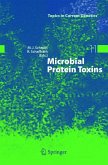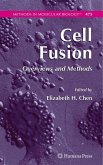With the rapid proliferation of RNAi applications in basic and clinical sciences, the challenge has now become understanding how components of RNAi machinery function together in a regulated manner. Argonaute proteins are the central effectors of RNAi and are highly conserved among eukaryotes and some archaebacteria. These RNA-binding proteins use small guide RNAs to silence expression of genes at the mRNA and DNA levels. In Argonaute Proteins: Methods and Protocols, expert researchers in this burgeoning field provide detailed, up-to-date methods to study Argonaute protein functions and interactions in a wide variety of cell types ranging from yeast to mammalian systems, as well as in vitro. Written in the highly successful Methods in Molecular Biology(TM) series format, chapters include brief introductions to their respective topics, lists of the necessary materials and reagents, step-by-step, readily reproducible laboratory protocols, and key tips on troubleshooting and avoiding known pitfalls.
Practical and authoritative, Argonaute Proteins: Methods and Protocols serves as a vital reference for both experienced and novice scientists approaching the vast complexities of RNAi research.
Practical and authoritative, Argonaute Proteins: Methods and Protocols serves as a vital reference for both experienced and novice scientists approaching the vast complexities of RNAi research.
From the reviews:
"It can be fully appreciated the high quality of the book, the so well organized and sequentially logic presentation of the chapters. ... giving a very update and detailed presentation of the entire Argonaute family members, their evolutionary conservation in Eukaryotes, mechanisms of action, methods to study in vitro and in vivo ... . each biologist and physician, either involved in research or in clinical application will find irreplaceable this book. Hope the reader will get his own copy of this exciting book." (Manuela Monti, European Journal of Histochemistry, July, 2011)
"It can be fully appreciated the high quality of the book, the so well organized and sequentially logic presentation of the chapters. ... giving a very update and detailed presentation of the entire Argonaute family members, their evolutionary conservation in Eukaryotes, mechanisms of action, methods to study in vitro and in vivo ... . each biologist and physician, either involved in research or in clinical application will find irreplaceable this book. Hope the reader will get his own copy of this exciting book." (Manuela Monti, European Journal of Histochemistry, July, 2011)








